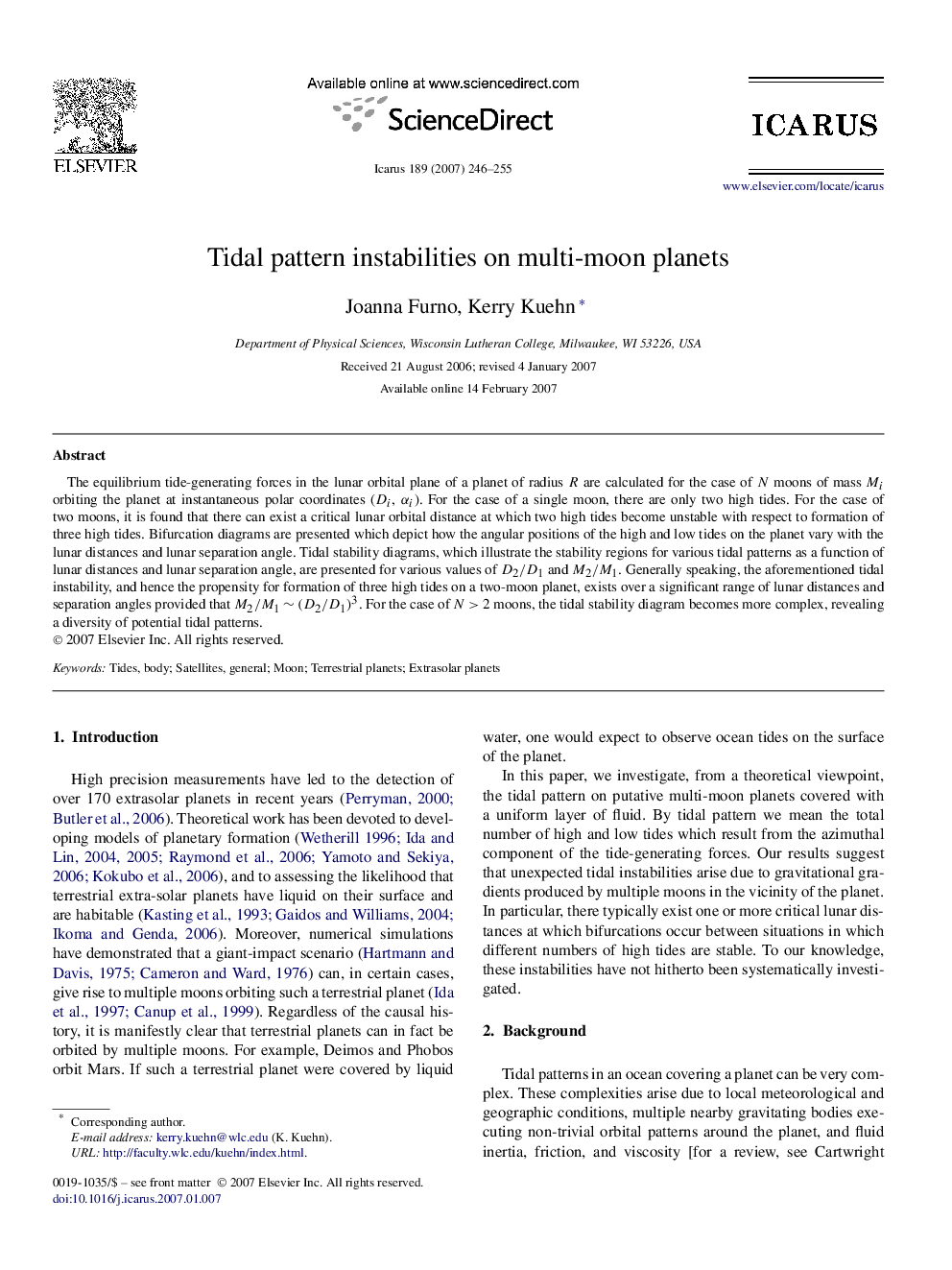| Article ID | Journal | Published Year | Pages | File Type |
|---|---|---|---|---|
| 1775575 | Icarus | 2007 | 10 Pages |
The equilibrium tide-generating forces in the lunar orbital plane of a planet of radius R are calculated for the case of N moons of mass MiMi orbiting the planet at instantaneous polar coordinates (DiDi, αiαi). For the case of a single moon, there are only two high tides. For the case of two moons, it is found that there can exist a critical lunar orbital distance at which two high tides become unstable with respect to formation of three high tides. Bifurcation diagrams are presented which depict how the angular positions of the high and low tides on the planet vary with the lunar distances and lunar separation angle. Tidal stability diagrams, which illustrate the stability regions for various tidal patterns as a function of lunar distances and lunar separation angle, are presented for various values of D2/D1D2/D1 and M2/M1M2/M1. Generally speaking, the aforementioned tidal instability, and hence the propensity for formation of three high tides on a two-moon planet, exists over a significant range of lunar distances and separation angles provided that M2/M1∼(D2/D1)3M2/M1∼(D2/D1)3. For the case of N>2N>2 moons, the tidal stability diagram becomes more complex, revealing a diversity of potential tidal patterns.
